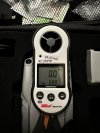As a LEO, and my organization‘s drone coordinator, I am frequently asked about our ability to fly in a variety of wind conditions, in rare occasions to potentially rescue somebody or save a life.
In my experience, while you should take note of wind forecasts, terrain, buildings, and a number of other factors not considered in a forecast will affect the direction and speed of the wind you will encounter. The wind funnels through certain areas and is often higher than what is forecast. High terrain and buildings may diminish wind you encounter, particularly at lower attitudes.
I may have missed it, but when giving pilots advice on flying in windy conditions, I stress that if at all possible, they launch their flight so they will be flying into the wind to the target area (headwind), as opposed to flying with the wind (tailwind). If they encounter wind trouble at launch, or during the flight, they should be able to recover the drone if they are coming back to the HP with the wind.
while it is not always possible, particular along the shorelines of bodies of water, where possible I always try to fly into a headwind.
As can be seen in Airdata with a premium account, the winds usually get higher (sometimes much higher), the further you go up, but in a few cases, winds diminish above a certain height, but that is rare.
I also usually fly in the regular mode. If I get in wind trouble, the first thing I do is go to the sport mode and move to a lower altitude.












